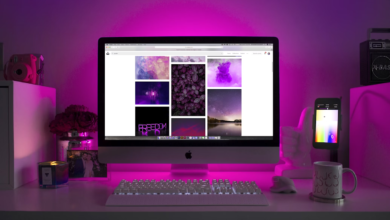Podcast: Play in new window | Download
Newspapers, those once ubiquitous bundles of paper delivered to doorsteps or snatched from newsstands, have played a pivotal role in shaping societies for centuries. They have informed citizens, ignited revolutions, and served as historical records of our ever-changing world. But where did these seemingly mundane sheets of paper originate, and how have they evolved to keep pace with a rapidly transforming world? Let’s delve into the fascinating history of newspapers, tracing their journey from handwritten newsletters to the digital headlines dominating our screens today.
The earliest forerunners of newspapers can be traced back to ancient Rome. Acta Diurna, meaning “daily acts,” were handwritten news sheets posted in public places around Rome in 59 BCE. These sheets contained information on government proceedings, military campaigns, and births and deaths. However, due to the limitations of writing by hand and the lack of widespread literacy, Acta Diurna remained accessible only to a select few.
Fast forward to the 16th century, and Europe witnessed the emergence of handwritten news sheets in major cities like Venice. These “avisi,” or “news,” focused primarily on political and military affairs in Italy and Europe. The invention of the printing press by Johannes Gutenberg in 1440 marked a turning point. The first printed news sheets appeared in Germany in the early 1600s, often called “printed newsbooks” or “relations.” These early newspapers were typically small, single sheets containing summaries of current events, frequently sourced from handwritten newsletters. Government censorship was prevalent, with authorities controlling the content and distribution of these early publications.
The 17th century saw a rise in the popularity of these printed news sheets across Europe. England saw the emergence of “corantos,” small, densely packed sheets containing news from abroad. The “weekly newsbook” format also gained traction, offering a more comprehensive overview of current events. However, strict government control and licensing requirements limited the growth and diversity of the press.
The tide began to turn in the 18th century, particularly in Britain. The relaxation of censorship laws led to a flourishing of newspapers, with titles like The Daily Courant (1702) becoming the first regularly published daily newspapers. Coffee houses became popular gathering places where patrons could read and discuss the latest news in these publications. Newspapers also played a crucial role in the American Revolution, with publications like the Pennsylvania Gazette, edited by Benjamin Franklin, serving as vital tools for disseminating revolutionary ideals and mobilising public opinion.
The 19th century witnessed a golden age for newspapers. Technological advancements like the invention of the rotary press in the mid-1800s led to faster printing and mass production, making newspapers more affordable and accessible to the masses. The rise of literacy rates further fueled newspaper readership. Newspapers became more diverse, catering to specific audiences with a range of political viewpoints. Investigative journalism emerged, with reporters like Nellie Bly exposing social injustices and corruption. The development of telegraph technology in the mid-19th century allowed for faster news gathering and dissemination, revolutionising how news was reported.
The 20th century brought about further innovations in the newspaper industry. The introduction of photography in the late 19th century added a new dimension to news reporting, allowing readers to see the events they were reading about. The rise of radio and television in the mid-20th century posed a challenge to newspapers, offering a more immediate form of news consumption. However, newspapers adapted by focusing on in-depth analysis, investigative reporting, and local news coverage that broadcast media couldn’t replicate.
The late 20th and early 21st centuries witnessed a seismic shift in the newspaper industry with the rise of the Internet. Online news websites began to offer news updates around the clock, challenging the traditional newspaper model of daily or weekly delivery. The ease of access and immediacy of online news sources led to a decline in print newspaper readership. Newspapers have had to adapt by developing strong online presences, offering digital subscriptions, and experimenting with multimedia content like video and podcasts.
The future of newspapers remains uncertain. While print readership continues to decline, many newspapers have successfully transitioned to the digital realm. The ability to offer in-depth reporting, local coverage, and curated content remains a key advantage of newspapers in the digital age. Newspapers continue to play a vital role in holding powerful institutions accountable, fostering informed citizens, and providing a historical record of our times. Whether in print or online, newspapers remain a testament to humanity’s enduring quest for knowledge and understanding of the world around us.
Podcast: Play in new window | Download





